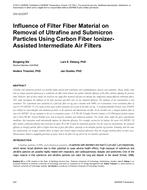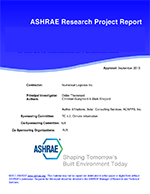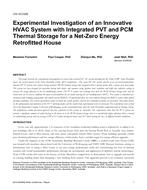Repair work, regardless of energetic improvement, costs money. Assuming that owners or investors of buildings don’t seethe necessity or can’t afford to pay for the implementation, money becomes a severe obstacle for any energy-oriented refurbishment.The crucial question concerning all energy-saving measurements is the following: how realistic is the chance that additionalcosts for refurbishment, from day one of the construction period, can be amortized by a reduction of heating costs during the utilizationperiod of the building?
Assessments of the economic viability of various measurements given by industry, the housing sector, and owners, but alsoby science, show significant differences. Besides climatic, building physics, geometrical, and economic parameters, the resultsare also influenced by the particular calculation method. Depending on the calculation approach, different statements concerningthe amortization of energy-saving methods will be reached. This leads to fierce public discussions.Very often, “pseudo” calculation methods are being used. This means inaccurate, incomplete, or only estimated calculationmethods. However, one has to admit that simple approaches cannot be avoided because exact cost ratios are missing or cannotbe achieved within a reasonable cost framework. Important in this case would be an open statement of the simplifications anda discussion of the resulting consequences.
In general, type, volume and execution of restoration measures have to be exactly optimized to the building. For this purpose,a competent, individual expert analysis by a qualified energy-efficiency specialist is needed. A careful survey will enable the expertto develop a restoration schedule, which describes the chronological order of measurements that will make good sense and definesaving potentials. One also has to be aware that insulation measures are especially profitable when repair measures, for example,of the roof or the renovation of the plaster of a facade, are due. If energetic improvement measures are being integrated into ageneral modernization, one-off costs such as scaffolding costs, site setup, and rubble trough are due only once. Therefore the costsfor the original energetic renovation are reduced.
This study clearly shows that the evaluation of the economic efficiency of a restructuring measure with different methods andspecifications is possible. Based on the examples and variations, the strong impact of different parameters becomes clear. To makea general statement concerning economy and profitability of a restoration, for example, additional insulation of an outer wall, thereare a lot of unknown results. First, the boundary conditions that determine the energetic savings potential such as U-factor in thebuilding stock, internal and external climatic conditions, and the energetic state of the other building parts are decisive. Besides theproject specifications, universal but unsteady parameters such as energy prices and rise in energy prices are of importance. A furtherfactor to be noted is that, in the end, it the inhabitant and their behavior that mostly influences the efficiency of the building. Theydetermine the energy consumption with regulation of heating, room temperature, and ventilation.
All of these parameters are necessary to come to a conclusion concerning economic evaluation. Still, it is difficult to generalizethem only to come to a universal statement concerning the economic efficiency of insulation measurements. The margin of fluctuationof the results, assuming various positive and negative scenarios, that shows the limits of plausible and realistic parameter
Citation: Thermal Performance of Exterior Envelopes of Whole Buildings XIII, Conference Papers
Product Details
- Published:
- 2016
- Number of Pages:
- 7
- Units of Measure:
- Dual
- File Size:
- 1 file , 230 KB
- Product Code(s):
- D-BldgConf16-57


